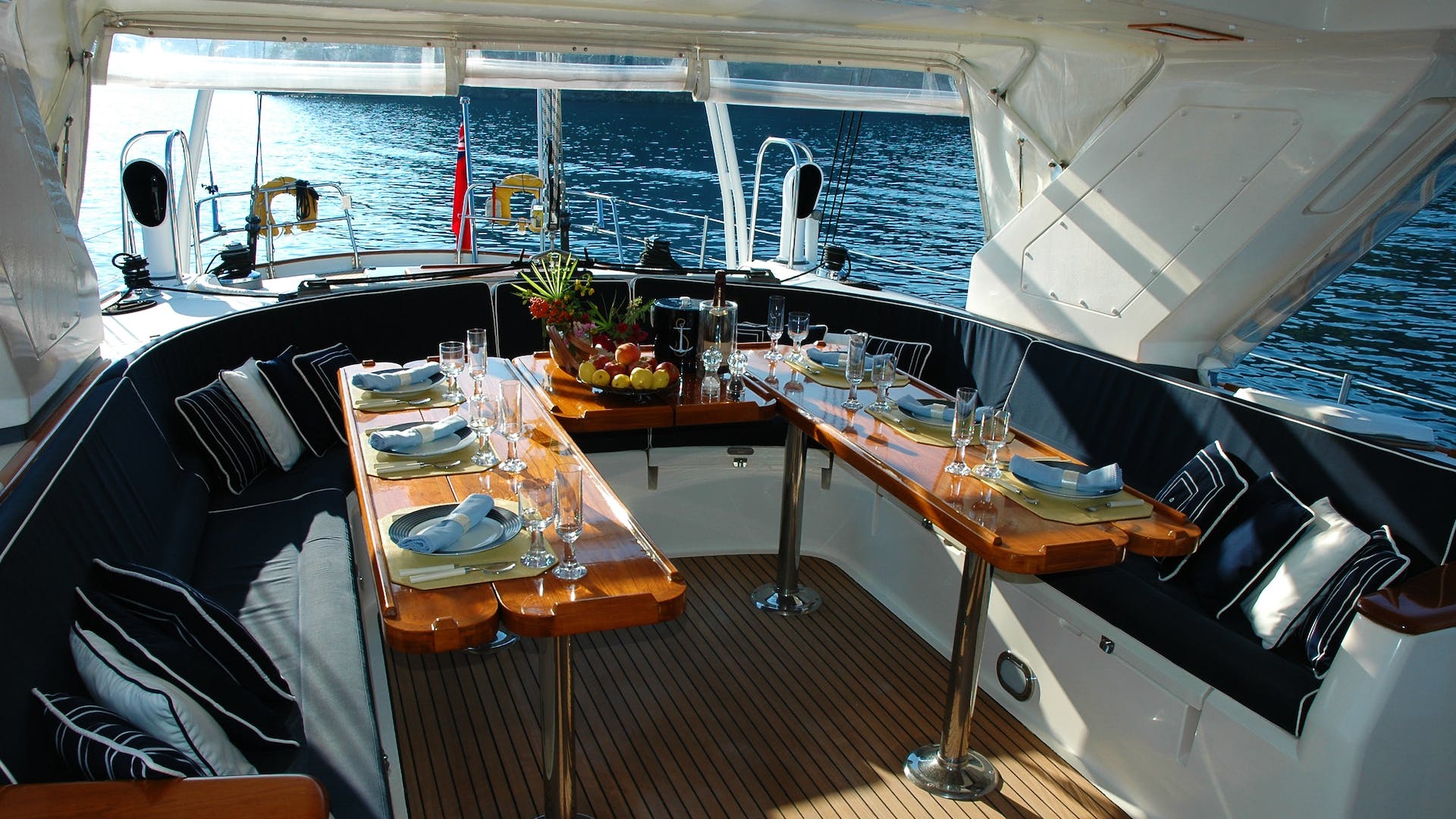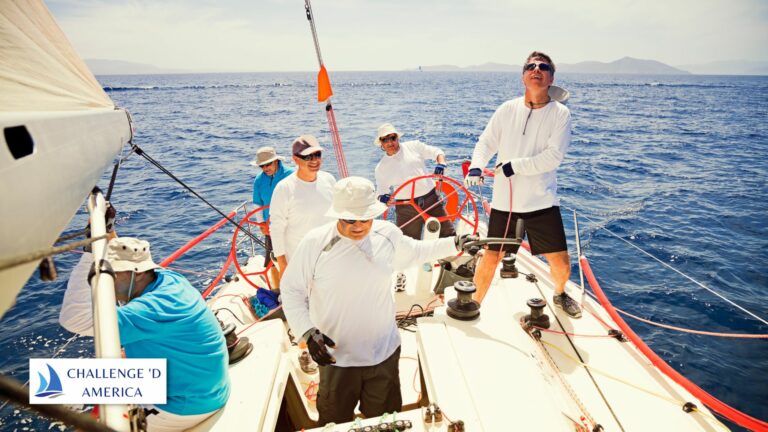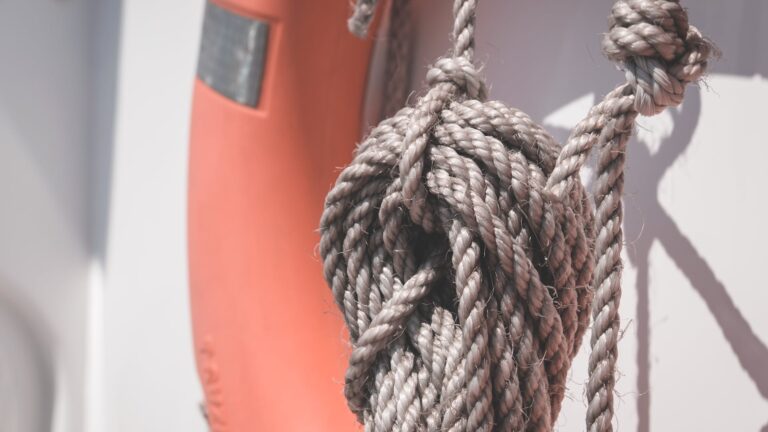Can a Sailboat Survive a Rogue Wave?
In the world of sailing, many sailors will tell tales of their close encounters with rogue waves – towering walls of water that suddenly rise up out of the ocean, posing a serious threat to any vessel unfortunate enough to be in its path. This article explores the risks posed by rogue waves, how to prepare for them, and whether it is possible for a sailboat to survive one.
The Nature of Rogue Waves
Rogue waves are also known as freak waves or monster waves and they are defined as unusually large and spontaneous surface waves that can appear suddenly in open ocean waters and threaten even the strongest vessels with destruction due to their size and intensity.
They are typically caused by strong winds or currents that cause several smaller waves to combine into one larger one, creating an immense surge that can reach up to 30 metres (100 feet) high and travel at speeds up to 50 knots (93 kilometres per hour).
It is estimated that rogue waves occur on average once every 10 years in any given area, although some regions are more prone than others due to environmental characteristics like strong winds or currents which can cause more frequent rogue wave events.
The Impact of a Rogue Wave on a Sailboat
A sailing boat faced with such a wave would have little chance of survival, and if it came at night, maybe not even the chance to hit the EPIRB (Emergency Position Indicating Radio Beacon).
If hit by such an immense wall of water, most vessels would be capsized or pushed off course, potentially causing serious damage that could range from snapped masts and broken rigging lines to hull damage or leaks in the boat’s structure due to its sheer force and power.
Even if the boat survives unscathed from the initial impact, it could easily be swept away by the current created by such an immense wave – potentially leading it into danger if no precautions have been taken beforehand by its crew or skipper.
How to Prepare for a Rogue Wave
The key to surviving any potential rogue wave encounter is preparation – both on board your vessel and through knowledge about what you should do when faced with such an event on open waters.
This includes making sure all safety equipment is onboard your sailboat (including life jackets) and regularly maintaining your vessel’s systems so that they work properly when needed most, ensuring all crew members know how to use safety equipment correctly, having an emergency plan in place, knowing what signs might indicate an impending rogue wave, and understanding how best to react during such an event should it occur while out at sea.
The Role of the Skipper in Preparing for a Rogue Wave
The skipper has an important role in preparing his vessel and crew for any potential rogue wave encounter – from making sure everyone knows safety protocols onboard such as ‘man overboard’ drills, understanding weather conditions before setting sail, maintaining awareness throughout their voyage through careful navigation techniques, monitoring their radio channels for any updates about possible weather changes, ensuring all life-saving equipment is onboard and working correctly, having emergency plans mapped out beforehand, monitoring sea conditions during their voyage, as well as being aware of any signs which might indicate an impending rogue wave event (such as large swells).
Safety Equipment Needed for Protection from a Rogue Wave
In order to protect your sailboat from potential damage caused by rogue waves, there are several pieces of safety equipment which should be carried onboard at all times – including life jackets, personal flotation devices (PFDs), emergency flares/signals and other signaling devices like whistles or distress flags/lights, emergency radios/VHFs (to communicate with other vessels), EPIRBs (Emergency Position Indicating Radio Beacons) which can be used when help is needed, bilge pumps/water pumps which can help remove excess water caused by leakage or flooding if hit by heavy rain or rough seas, fire extinguishers which should always be ready-to-use incase there is ever an onboard fire due to electrical faults or fuel leaks etc.,
First aid kits which are essential during emergencies where medical attention may be needed quickly etc.. All these items should form part of your regular pre-voyage checklist before setting out at sea so you can remain safe during your voyage – especially during times when there may be heavy rain or severe weather conditions present which may increase chances for encountering rogue waves unexpectedly
How to Reduce the Risk of Damage from a Rogue Wave
Although it is impossible to predict when one might strike – there are certain steps you can take as skipper/vessel owner when out at sea which may reduce chances for encountering them unexpectedly: keep careful watch over weather conditions before setting sail, monitor sea conditions during your voyage using instruments like radar/echo sounders etc., avoid areas where strong currents are present if possible – particularly during bad weather conditions when they might increase chances significantly for encountering rouge waves unexpectedly etc., pay close attention while sailing near shoals/reefs/headlands etc., stay away from other vessels whenever possible – especially those travelling in opposite directions since this increases chances significantly too since they may end up ‘surfing’ each other’s wakes resulting in rouge wave formation etc.
The Role Of Technology In Preparing For A Rouge Wave
In recent years technology has become increasingly important when it comes to preparing for rouge wave encounters – both on board vessels as well as shore-based systems designed specifically with this purpose in mind.
Onboard vessels this includes using computers equipped with forecasting software designed specifically with rouge wave detection capabilities – helping crews better understand potential weather patterns so they can make more informed decisions about their route choices based on real-time data collected from various sources around them e.g., satellites etc.
Other technologies include using radar systems designed specifically with rouge wave detection capabilities built into them – allowing crews better visualisation abilities when sailing through areas prone towards these type events e.g., near headlands etc.
Shore-based systems like buoys also play important roles too since they collect valuable data points about various environmental characteristics like wind speed/direction, temperature variations etc., allowing meteorologists better understand what kind of extreme weather events might occur so they can inform mariners accordingly so they can make more informed decisions about their route choices before setting sail – reducing risk significantly whenever possible .
Strategies For Surviving A Rouge Wave Encounter
If you find yourself suddenly facing such an immense wall of water while out at sea then there are certain strategies you need implement quickly so that you have best chance possible surviving: firstly hold onto something solid so that you don’t get swept overboard – this could be mast rigging lines/hand rails depending upon where you’re standing onboard vessel etc.
Secondly evacuate any upper decks quickly incase vessel capsizes due sudden force exerted upon its hull e.g., engine room hatch coverings should also closed immediately after doing this incase flooding occurs suddenly too etc.
Thirdly if situation becomes serious then abandon ship immediately since there is no guarantee vessel will remain afloat after impact – use flotation devices if necessary until help arrives e.g., EPIRBs etc..
Conclusion
Rogue waves pose serious threats upon vessels unfortunate enough encounter them especially smaller boats like sailboats which don’t have same level protection enjoyed by larger ships e.g., bulkheads/watertight compartments etc.
However despite these risks involved there ways owners prepare their vessels ahead time before setting sail reduce chances encountering them unexpectedly e.g., checking all safety equipment regularly maintaining awareness about nearby warning signs whilst sailing through open waters – thereby giving crews best chance possible surviving should ever find themselves facing one whilst out at sea.


![nauticalchart-no1-sailing-navigation-waterways-marine-coastal-ocean-sea What does nautical chart No 1 indicate?[Editing Required]](https://challengedamerica.org/wp-content/uploads/2023/02/nauticalchart-no1-sailing-navigation-waterways-marine-coastal-ocean-sea-768x432.jpg)




